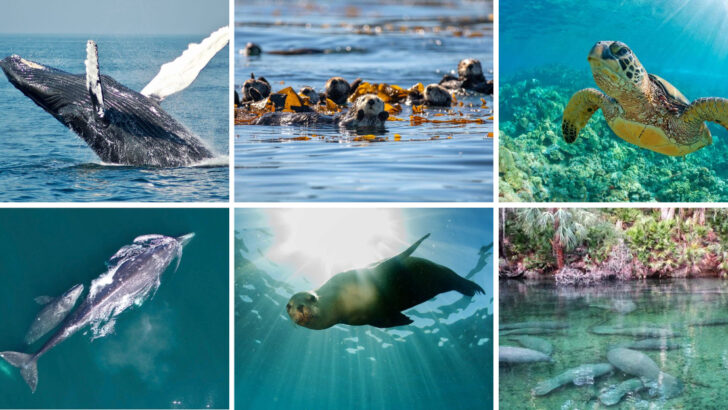The ocean’s not giving up—and neither are its wildest wonders.
From sea turtles hauling themselves onto beaches to once-vanished whales surfacing like ghosts, something incredible is happening just offshore. Animals we thought were gone—or close to it—are making stunning returns.
These aren’t vague sightings or wishful thinking. We’re talking pods of dolphins where there were none, sharks patrolling reefs again, and seabirds painting the skies in flocks.
Nature has grit. And when given half a chance, it bounces back with flair.
So if you thought the ocean was falling silent, think again. These creatures are loud, proud, and ready to reclaim their place.
Humpback Whale
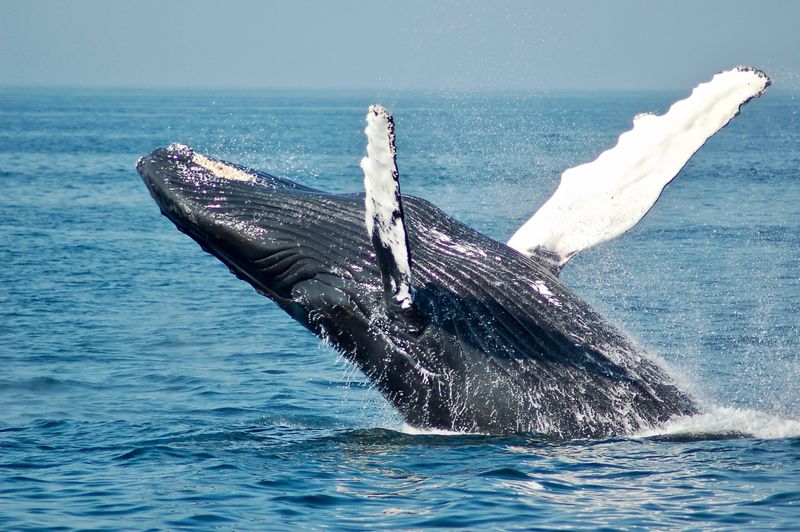
Humpback whales, with their hauntingly beautiful songs, are a symbol of ocean recovery. Once hunted near extinction, their populations are rebounding, thanks to conservation efforts. Imagine seeing this majestic creature breaching against a vibrant sunset. Their playful nature and acrobatic displays captivate spectators, creating unforgettable experiences. Conservation laws and sanctuaries have played a pivotal role in their resurgence. Today, they roam freely, contributing to the marine ecosystem’s vitality. Did you know? Humpback whales can communicate across hundreds of miles, using a complex series of sounds. Their songs are truly the ocean’s symphony.
Sea Otter
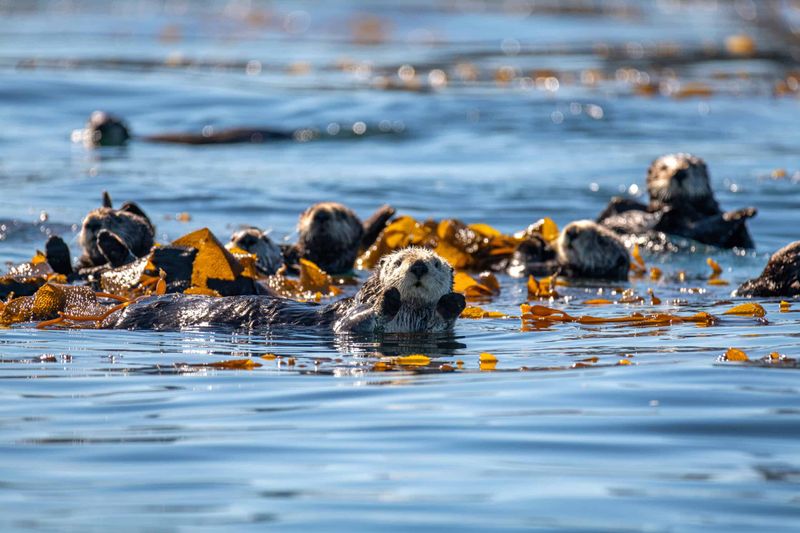
Sea otters are the adorable caretakers of California’s kelp forests. Once on the brink of extinction, these fluffy creatures are making a triumphant return. Their playful antics and endearing appearance make them a favorite among wildlife enthusiasts. By preying on sea urchins, they help maintain the balance of the kelp ecosystem, allowing it to thrive. Their return has been a game-changer for coastal biodiversity. Fun fact: Sea otters have the densest fur in the animal kingdom, with up to a million hair follicles per square inch! Their fur keeps them warm in chilly waters.
Green Sea Turtle
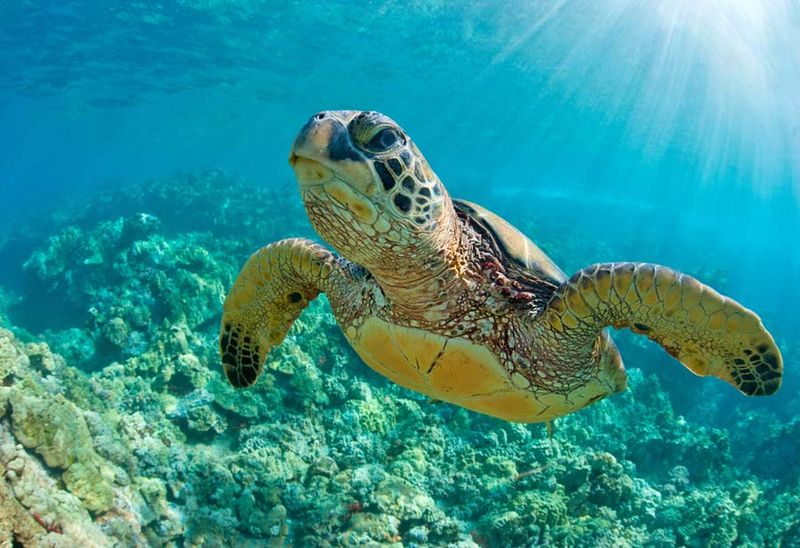
The green sea turtle is a symbol of hope and recovery, making its way back to America’s coasts. Protected nesting sites and conservation efforts have seen their numbers grow steadily. Picture one gliding through the warm waters of the Florida Keys, a serene presence in the ocean. Their peaceful nature and long migrations are awe-inspiring. They feed on seagrass, playing a crucial role in maintaining healthy marine ecosystems. Did you know? Green sea turtles can migrate over 1,400 miles between feeding and nesting sites. Their journeys are epic tales of endurance.
Gray Whale
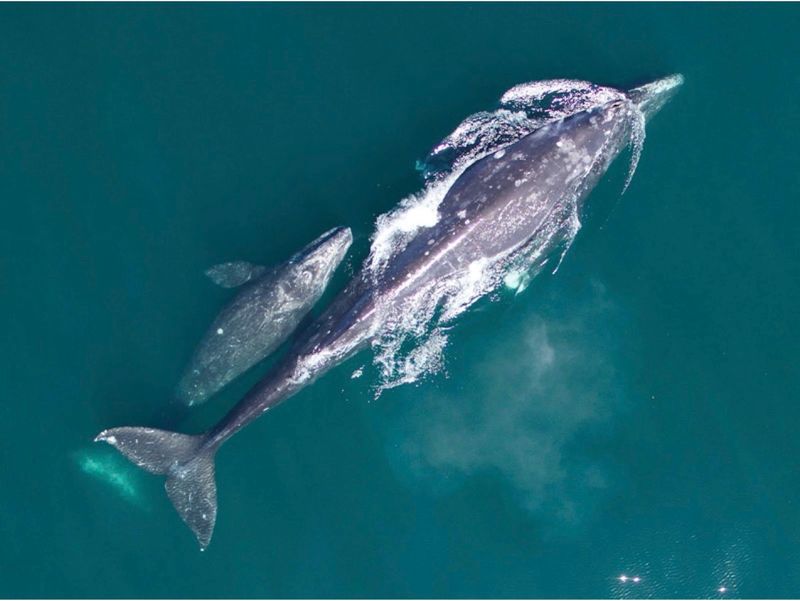
Gray whales are making a remarkable comeback along the Pacific coastline. These gentle giants embark on one of the longest migrations of any mammal, traveling thousands of miles from feeding grounds to calving lagoons. Picture a mother and calf swimming gracefully along the coast, a testament to the strength of maternal bonds. Conservation efforts have been instrumental in their recovery, allowing them to thrive once more. Their presence boosts local ecotourism, offering breathtaking whale-watching opportunities. Did you know? Gray whales were once known as “devil fish” due to their fierce defense of calves. Today, they’re symbols of peace.
Atlantic Puffin
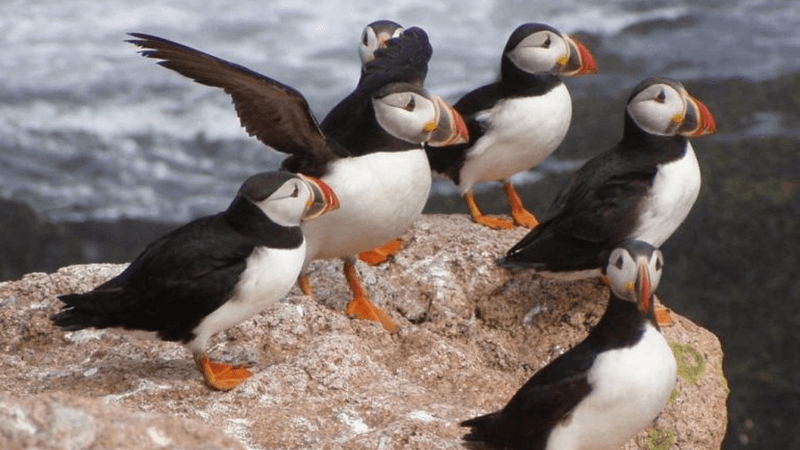
With their colorful beaks and comical antics, Atlantic puffins are the clowns of the sea. Once nearly vanished from America’s coastlines, they are staging a delightful return. Picture one perched on a rocky cliff in Maine, its vibrant beak gleaming in the sun. Conservationists have worked tirelessly to restore their habitats, ensuring these charismatic birds have a place to call home. Their return is a testament to persistence and hope. Fun fact: Puffins can fly up to 55 miles per hour, despite their chunky appearance! Their aerial agility is as impressive as their cuteness.
Manatee

Manatees, often called sea cows, are gentle giants making a comeback in Florida’s waters. Picture one gliding slowly through the clear springs, surrounded by lush vegetation. These peaceful herbivores are vital to their ecosystem, grazing on seagrass and helping to keep waterways clear. Conservation efforts, including speed regulations for boats, have significantly reduced threats to their populations. Their presence is a sign of a healthy aquatic environment. Did you know? Manatees are relatives of elephants, sharing distant evolutionary roots. Their slow, graceful movements are reminiscent of their terrestrial cousins.
California Sea Lion
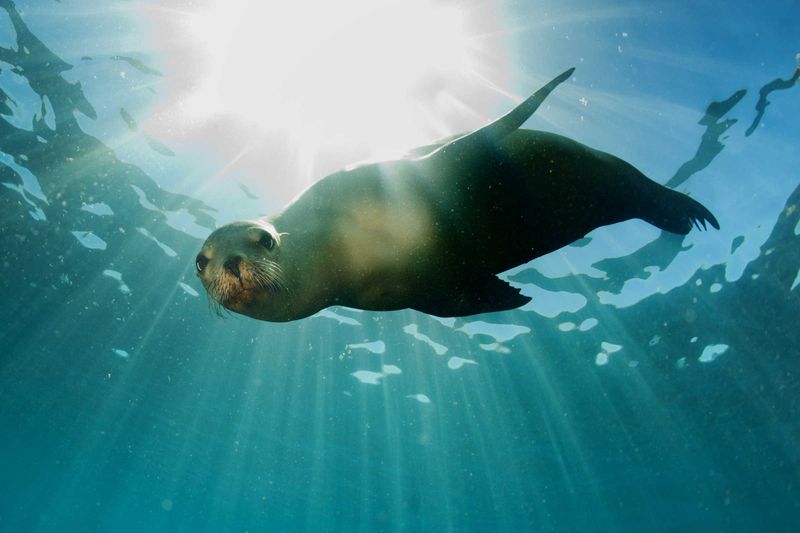
California sea lions are the acrobats of the ocean, known for their playful behavior and intelligence. Imagine one basking on a rock along the Pacific coast, barking loudly to its companions. Their populations have rebounded due to protections and abundant food supplies. These social creatures thrive in colonies, delighting visitors with their antics. They play a vital role in the marine food web, helping to maintain balanced ecosystems. Did you know? Sea lions can hold their breath for up to 20 minutes while diving. Their underwater agility is as captivating as their on-land charisma.
Leatherback Sea Turtle
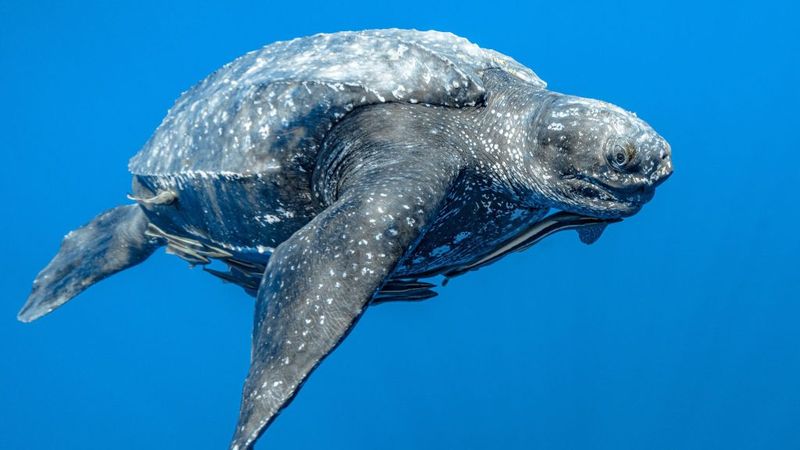
Leatherback sea turtles, the giants of the turtle world, are making a heartening comeback. Envision one of these majestic creatures swimming through the open ocean, its dark shell glistening in the sunlight. Conservation efforts have helped protect their nesting sites and reduce bycatch in fishing gear. These ancient mariners travel thousands of miles, navigating vast oceans with precision. They feed primarily on jellyfish, contributing to the balance of marine ecosystems. Fun fact: Leatherbacks are the largest sea turtles, growing up to seven feet long and weighing over 2,000 pounds! Their size is as awe-inspiring as their journey.
Bottlenose Dolphin
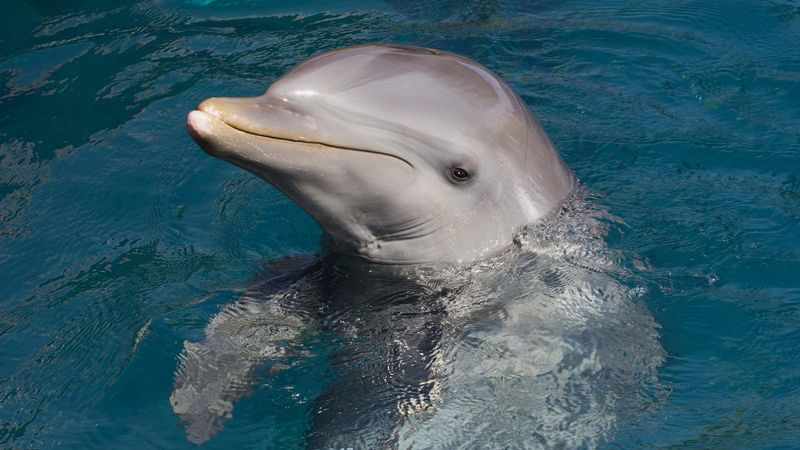
Bottlenose dolphins are the charismatic ambassadors of the sea, known for their intelligence and playfulness. Picture one leaping gracefully from the Gulf of Mexico, droplets shimmering in the sun. These social creatures live in complex groups, using echolocation to communicate and hunt. Their populations are recovering, thanks to marine protected areas and conservation efforts. They bring joy to those lucky enough to witness their antics. Did you know? Dolphins have been known to play with seaweed and even surf waves for fun. Their sense of play is as remarkable as their intelligence.
Loggerhead Sea Turtle
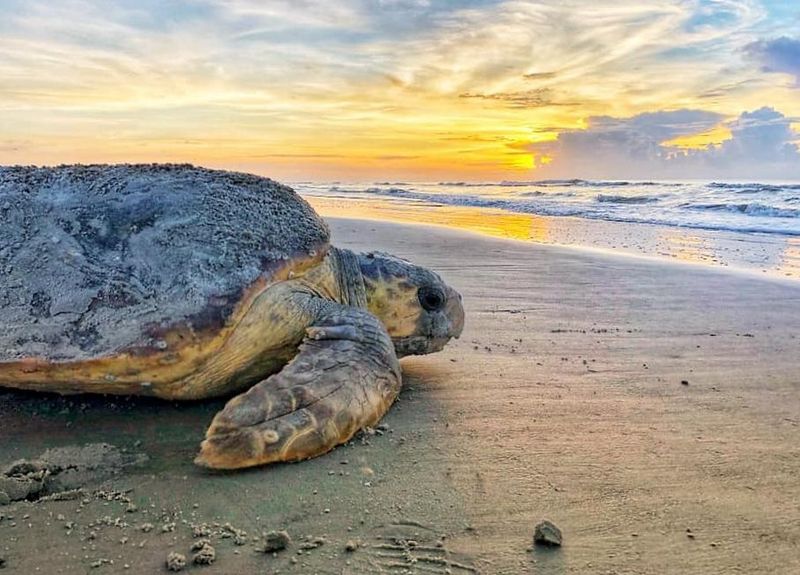
Loggerhead sea turtles, with their powerful jaws and determined nature, are making a steady recovery. Picture one emerging from the surf onto a sandy beach, embarking on the timeless ritual of nesting. Protecting their nesting sites has been crucial to their resurgence. They traverse vast distances, navigating with an innate sense of direction. Their presence on beaches signals a healthy marine environment. Fun fact: Female loggerheads return to the same beach where they hatched to lay their eggs, a phenomenon known as natal homing. Their journeys are as mysterious as the ocean itself.
Harbor Seal
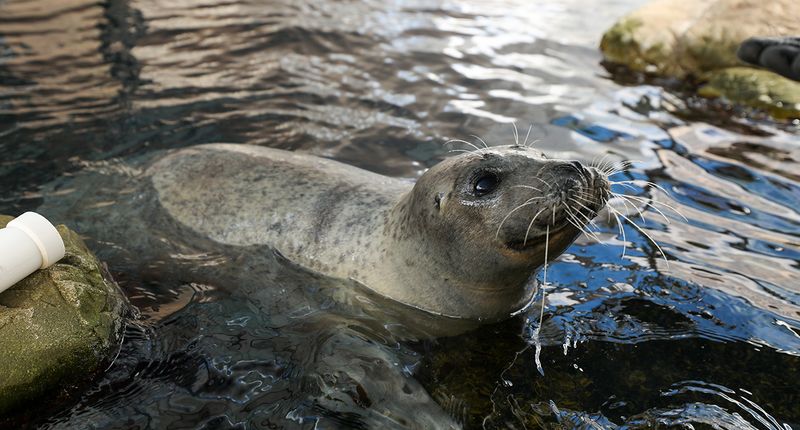
Harbor seals, with their curious expressions and sleek bodies, are making a charming return to New England’s harbors. Picture one peeking above the water, its eyes full of mischief. These adaptable mammals thrive in coastal waters, relying on healthy fish populations for sustenance. Conservation efforts have reduced pollution and protected their habitats, allowing them to flourish once more. Their presence is a positive indicator of ecosystem health. Did you know? Harbor seals can sleep underwater, holding their breath for up to 30 minutes. Their adaptability is as impressive as their cute appearance.
Northern Elephant Seal
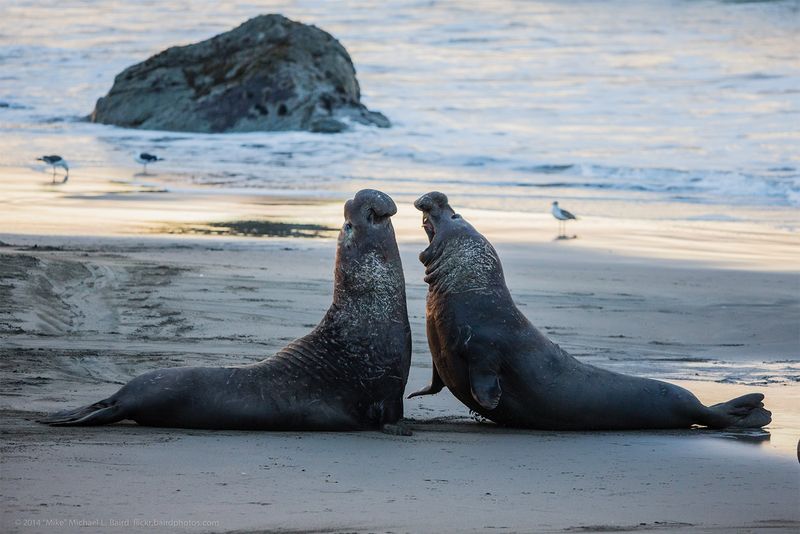
Northern elephant seals, with their unique proboscises and massive size, are making a robust return to California’s beaches. Imagine one resting on the sand, its imposing presence a sight to behold. These marine mammals undertake impressive migrations, spending months at sea diving to great depths. Their comeback is a triumph of conservation, as protection measures have allowed their numbers to grow. They play an important role in the marine ecosystem, their presence a sign of ocean health. Fun fact: Male elephant seals can weigh up to 5,000 pounds, making them one of the largest seal species.
Common Loon
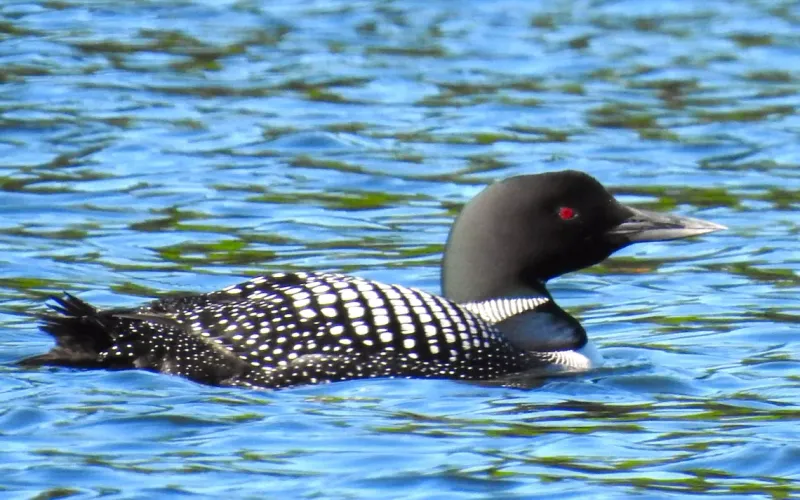
Common loons, with their haunting calls, are returning to northern lakes and coastal areas. Picture one swimming gracefully, its reflection shimmering on the water. These iconic birds are symbols of wilderness, their presence a reassuring sign of ecological balance. Efforts to preserve their breeding habitats have been crucial to their recovery. Their eerie calls are a staple of northern nights, resonating across the water. Did you know? Loons have solid bones, unlike most birds, making them exceptional divers. Their ability to plunge deep after fish is as remarkable as their evocative sounds.
American Lobster
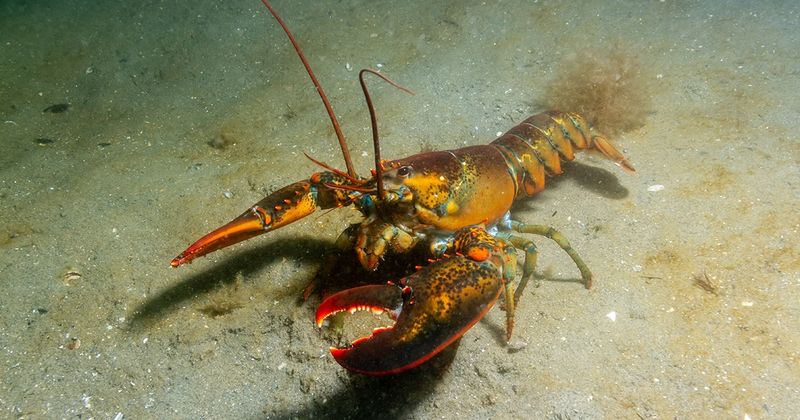
American lobsters, with their vibrant shells and tasty reputation, are clawing back to healthy populations. Picture one crawling along the ocean floor off Maine’s coast, a symbol of the sea’s bounty. Lobster fishing regulations have been pivotal in sustaining their numbers, ensuring a thriving industry and ecosystem. These crustaceans are more than just a culinary delight; they play a key role in marine food webs. Did you know? Lobsters can regenerate lost claws, a testament to their resilience. Their life cycle is as fascinating as their place in coastal cultures.
Great White Shark
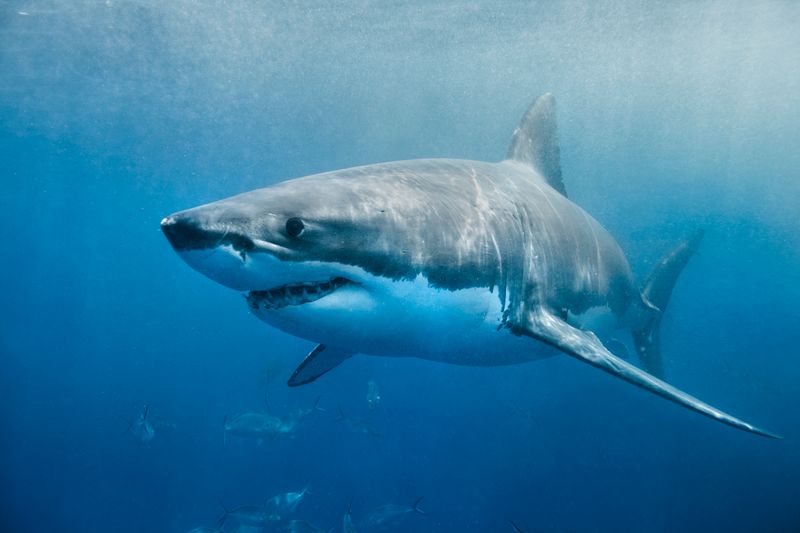
Great white sharks, with their reputation as ocean predators, are making a cautious comeback. Picture one swimming near the surface, its iconic dorsal fin cutting through the water. These apex predators play an essential role in maintaining marine balance, keeping prey populations in check. Conservation efforts and increased awareness have helped protect their habitats and reduce bycatch. Their presence is a testament to ocean vitality. Did you know? Great whites can detect a drop of blood in 25 gallons of water, showcasing their incredible sensory abilities. Their hunting prowess is as legendary as their image.
Atlantic Bluefin Tuna
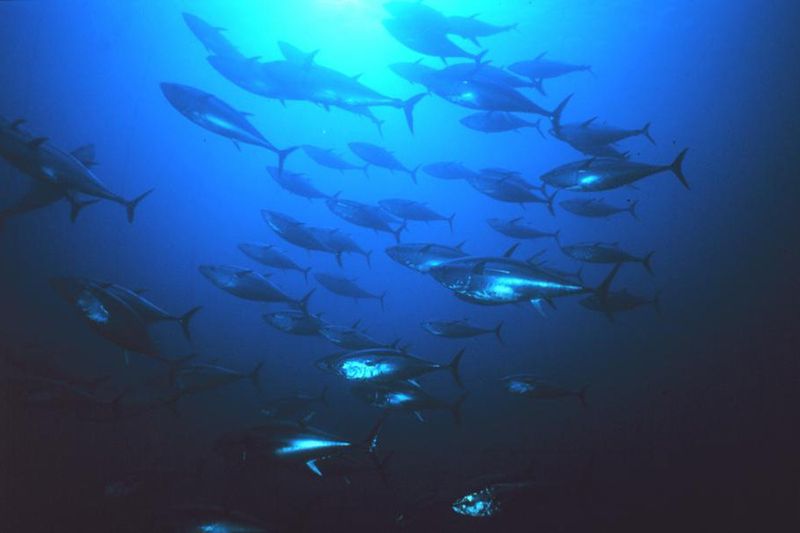
Atlantic bluefin tuna, renowned for their speed and strength, are swimming towards recovery. Picture this sleek fish cutting through the ocean with powerful strokes, its body shimmering in the water. Conservation measures, including quotas and protected areas, have been crucial to their resurgence. As an apex predator, they play a vital role in the marine food chain. Did you know? Bluefin tuna can accelerate faster than a sports car, reaching speeds up to 43 miles per hour. Their agility is as remarkable as their journey towards recovery.
Osprey
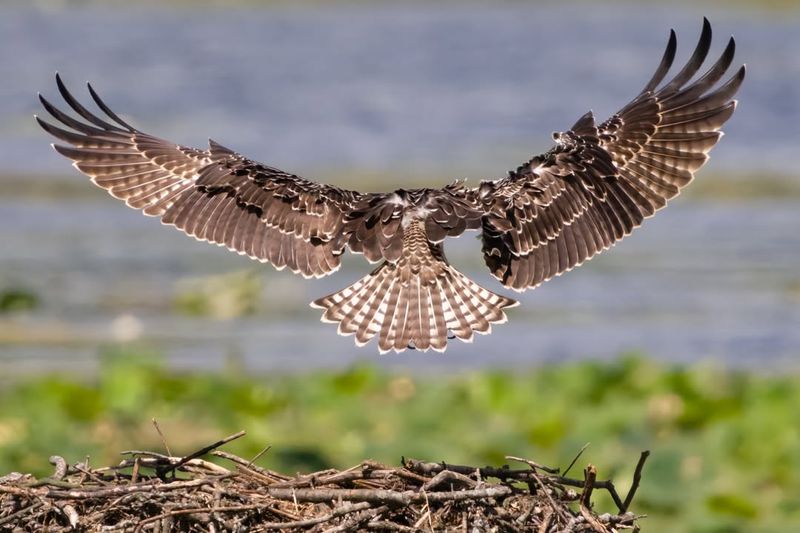
Ospreys, with their striking appearance and hunting prowess, are soaring back to coastal wetlands. Imagine one gliding effortlessly, eyes locked on fish below. These birds of prey were once endangered due to pesticides, but conservation efforts have led to a remarkable recovery. Their nests, often built high up, are a testament to their resilience and adaptability. Did you know? Ospreys can rotate their outer toes to grasp fish with two toes in front and two behind. Their specialized hunting technique is as fascinating as their comeback story.
Glowing Jellyfish
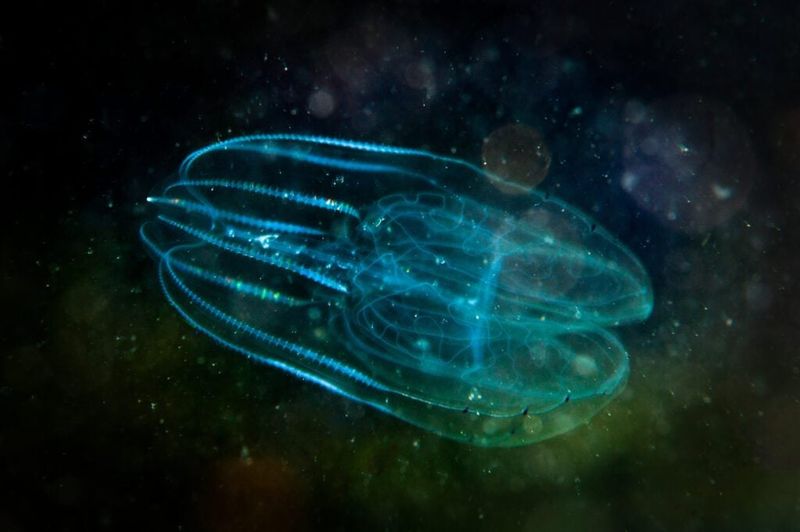
Imagine an ethereal glow cutting through the murky depths of the ocean. Meet the glowing jellyfish, a creature that dances with light as it gently pulses in rhythm with the tides. Once a mystery, these luminescent wonders are making a delightful comeback along America’s coastlines.
Their bodies, adorned with bioluminescent cells, create an enchanting underwater light show. At night, their glow paints the ocean in hues of blues and greens, intriguing both scientists and beachgoers alike.
Did you know? Glowing jellyfish have been inspiring developments in medical research, including advances in understanding cellular processes. What a luminous legacy!

